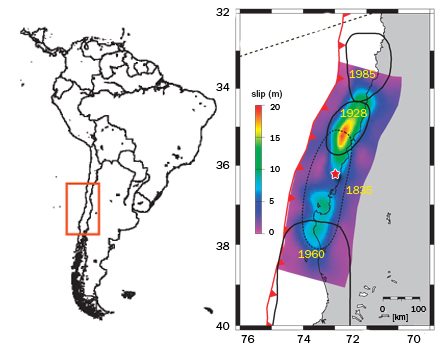Science News
More Chilean Earthquakes?

The largest earthquake recorded, measuring magnitude-9.5, happened along the Chilean coast in 1960. That’s why scientists weren’t too surprised when the magnitude-8.8 earthquake struck Conception, Chile about a year ago, killing 500 people.
Besides the 1960 and 2010 earthquakes there have been several other large quakes. Science News provides the reason:
Off the western coast of South America, the Nazca plate of Earth’s crust dives beneath the South American plate, pushing up the Andes and building up stress that gets relieved occasionally in powerful earthquakes.
In 1835, Charles Darwin was in the area and experienced a large magnitude-8.5 earthquake. Though there have been five other great earthquakes since then, none have ruptured in the same area that shook in 1835, a locality now known as the Darwin gap. Scientists, aware that the Darwin gap has been accumulating pressure for over 100 years, had been expecting a large quake in that gap.
But the 2010 quake was north of the Darwin gap. According to New Scientist, researchers studying the area after the recent quake
used tsunami, GPS and radar data to assess the amount of land movement during last year's quake. By feeding this into a model, they were able to estimate the amount of slippage on the fault and the variation in the release and accumulation of stress along it.
And, the results were striking (from Scientific American):
When pressures build up enough, they snap and cause a quake. Some areas, deep below ground to the north of Concepcion, slipped almost 20 meters in the 2010 earthquake but the area of the "Darwin gap" barely moved.
So rather than relieving and reducing the possibility of another large earthquake in the area, this most recent quake may have increased the possibility of another magnitude-7 or -8 earthquake occurring in the near future. The researchers published their findings in this week’s Nature Geoscience:
…increased stress on the unbroken patch may in turn have increased the probability of another major to great earthquake there in the near future.
Image credit: R. Stein, Lorito et al/Nature Geoscience 2011